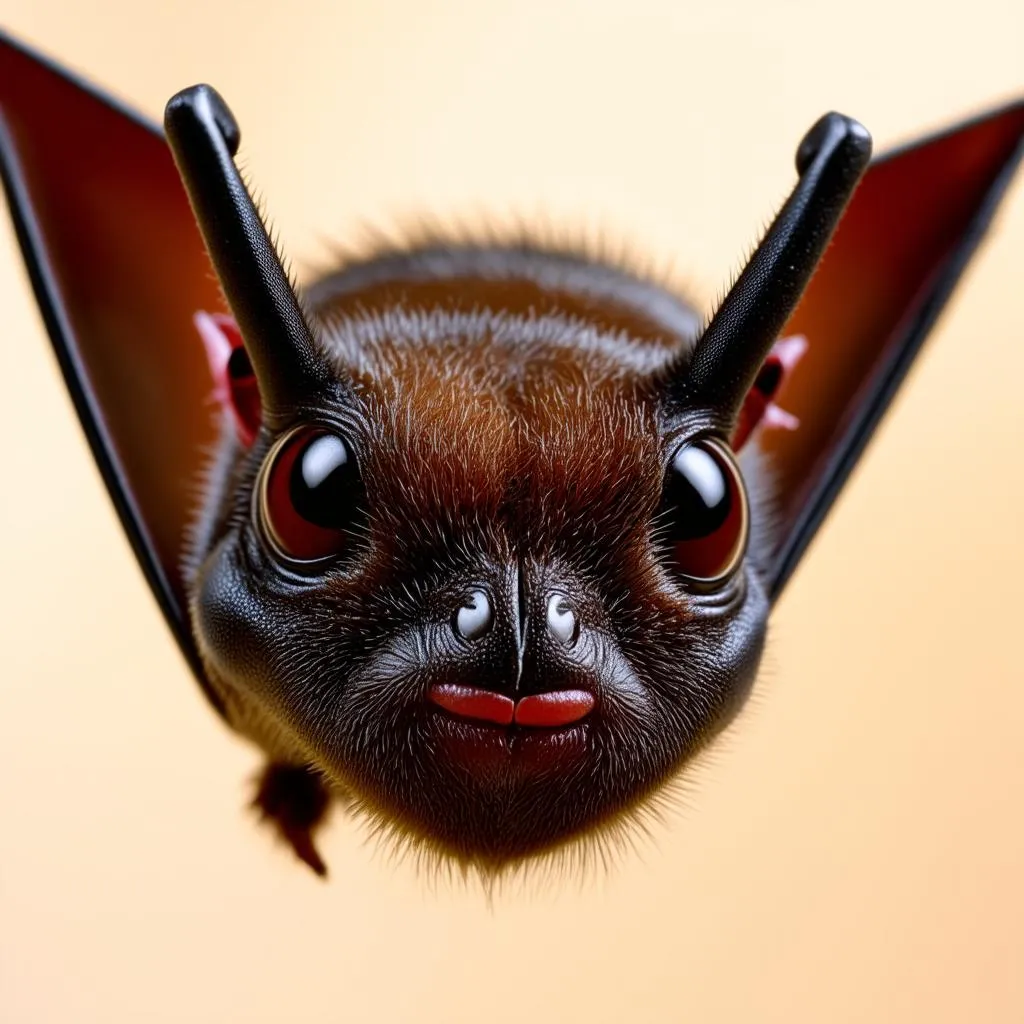Have you ever been strolling through a park at dusk, just as the sky begins to turn a deep indigo, and witnessed a flurry of bats take flight? It’s a mesmerising sight, and it begs the question: Do Bats Travel Alone? The answer is a bit more nuanced than a simple yes or no. While some bat species are solitary creatures, many others are surprisingly social, forming complex communities that would rival any bustling city.
The Social Lives of Bats: More Than Meets the Eye
Contrary to popular belief, many bat species are highly gregarious, forming colonies that can number in the hundreds, thousands, or even millions. For example, the Congress Avenue Bridge in Austin, Texas is home to a massive colony of Mexican free-tailed bats, estimated to be over 1.5 million strong! Imagine the cacophony of sound and flurry of wings as these nocturnal navigators emerge at twilight.
Why Live in Groups? Safety in Numbers and Beyond
Bats, like many other social animals, have evolved to live in groups for a multitude of reasons:
- Protection from predators: A larger group provides more eyes and ears to watch out for danger, such as owls, snakes, and hawks. Just imagine the collective vigilance of thousands of bats, their echolocation calls creating an intricate web of sound.
- Increased foraging efficiency: Foraging for food can be more successful in groups, especially for species that rely on ephemeral food sources like fruit or insects. In Costa Rica, for example, fruit bats often congregate around fruiting fig trees, sharing information about the best feeding spots.
- Cooperative breeding and roosting: Many bat species engage in communal roosting, sharing the responsibility of raising young and maintaining optimal roosting temperatures. These roosts can be found in a variety of locations, from caves and mineshafts to hollow trees and even man-made structures like bridges.
Solo Flyers: Bats That Prefer Their Own Company
While many bats thrive in social settings, some species are solitary or form only small groups. These lone wolves of the bat world often have different ecological requirements or hunting strategies that make solitary living more advantageous.
- Spacing out for resources: Some bat species, like the spotted bat found in the western United States, are highly territorial, especially during mating season. They defend their foraging grounds fiercely, preferring to hunt alone to avoid competition.
- Specialized diets: Certain bat species, such as the fishing bat, have highly specialized diets that require them to forage over large areas, making large group living impractical. Picture a lone fishing bat skimming the water’s surface, its oversized feet poised to snatch unsuspecting fish from the depths.
Do Bats Travel Alone on Vacation? Unpacking Common Queries
Just like humans, bats sometimes embark on journeys, whether it’s for seasonal migration, dispersal to new roosting sites, or simply to explore new foraging grounds. But do they pack their tiny bat suitcases and head off solo?
While some bats might undertake these travels independently, others stick with their colony mates, migrating en masse to warmer climates or following established flyways passed down through generations. Imagine the sight of thousands of bats streaming across the sky, guided by the stars and their internal compasses, a testament to the power of collective navigation.
Planning Your Bat-Watching Adventure: Tips from travelcar.edu.vn
Interested in witnessing the wonders of bat flight firsthand? Here are some tips for planning your own bat-watching adventure:
- Research local bat populations: Consult with local wildlife organizations or visit reputable websites like travelcar.edu.vn to find out about bat populations in your area and the best times to observe them.
- Choose your location wisely: Look for areas with water sources, abundant insect life, or fruiting trees, as these are prime bat habitats. Perhaps a visit to Carlsbad Caverns National Park, home to a spectacular bat emergence each evening, or a stroll along the Chicago Riverwalk, where bats flit amongst the city lights.
- Be patient and respectful: Remember that bats are wild animals and should be observed from a safe distance. Avoid using flash photography or making loud noises that could disturb them.
 Bats Flying Over Water
Bats Flying Over Water
Navigating the Night: The Feng Shui of Bats
In many cultures, bats are revered as symbols of good fortune, prosperity, and even protection. In the realm of Feng Shui, the ancient Chinese art of harmonizing one’s environment, bats are often associated with the element of wood and are believed to bring good luck and abundance.
- Placement is key: Placing bat-themed decor in specific areas of your home or office, such as the wealth corner or the career area, is thought to enhance these aspects of your life.
- Material matters: Choosing bat figurines or artwork crafted from natural materials like wood or metal is believed to amplify their auspicious energy.
Whether you’re fascinated by their social dynamics, their ecological importance, or their symbolic significance, there’s no denying that bats are creatures of intrigue. So the next time you ponder, “do bats travel alone?”, remember that the answer is as diverse and multifaceted as the bats themselves.
 Close-Up Bat Face
Close-Up Bat Face
For more insights into the natural world and travel inspiration, explore the wealth of articles on TRAVELCAR.edu.vn.